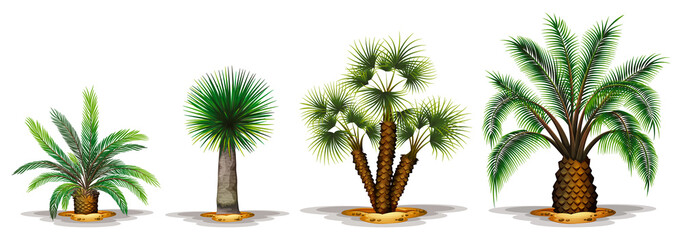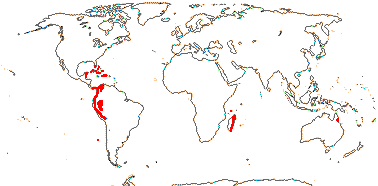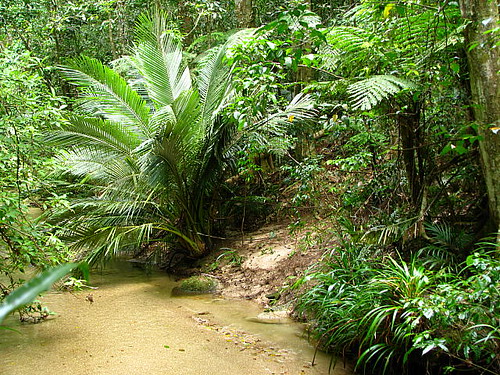Ceroxyloideae
Pseudo Phoenix lediniana
The Ceroxyloideae are a subfamily of the palm family ( Arecaceae ).
Features
The representatives are large, or stemless, single -stemmed palm trees, very rarely more stocky. They are hermaphroditic or dioecious. The leaves are pinnate with leaflets reduplikaten (cleavage of the sheet along the abaxial edge ). A crown shaft can be formed or missing. The inflorescence has a cover page and one to several bracts on the inflorescence stalk. The bracts along the inflorescence axis are greatly reduced. The flowers are sessile or have a short stalk. They are available individually or when in groups, then the group is monopodial, sympodial not. The flowers never stand in pits. Unisexual flowers are slightly to strongly dimorphic. The gynoecium is synkarp ( verwachsenblättrig ) with three or more fruits compartments and three or more ovules. The endosperm of the seeds is homogeneous.
Dissemination
The three tribes of the subfamily each have their own distribution: The Cyclospatheae are limited to the Caribbean, the Phytelepheae occur in the Andes, and the Ceroxyleae come in the territories of the former Gondwana: Andes, Juan Fernandez Islands, Madagascar and North Australia.
System
The Ceroxyloideae within the meaning of Dransfield et al. (2008 ) are identified in numerous studies as a natural kinship group ( clade ). They are the sister group of the Arecoideae. The subfamily consists of three tribes. The Phytelepheae have long been managed as a separate subfamily Phytelephantoideae come in cladistic analyzes, however, always to be within the Ceroxyloideae. Therefore, they were asked as to the tribe Ceroxyloideae. The relationship of the tribes to each other is as follows:
Cyclospatheae
Ceroxyleae
Phytelepheae
For a list of the eight genera see palm family.
Documents
- John Dransfield, Natalie W. Uhl, Conny B. Asmussen, William J. Baker, Madeline M. Harley, Carl E. Lewis: Genera palmarum. The Evolution and Classification of Palms. Second edition, Royal Botanic Gardens, Kew, 2008, ISBN 978-1-84246-182-2, p 333










